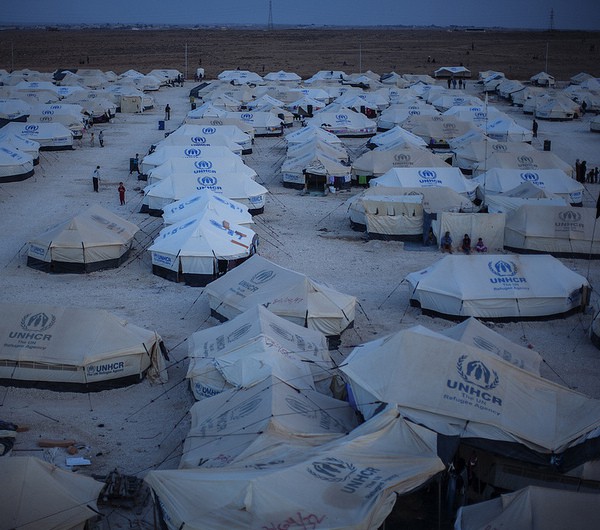It is a banal insight that law creates the illegal and the conditions for illegality. At the most basic level, crossing a border without the required identification (passport) and authorisation (visa) becomes a criminal offence (France, Germany, Lithuania) or misdemeanour (Portugal, Slovenia). In the Sinai a migrant abduction economy has flourished, with thousands of Sub-Saharans tortured in order to extract a ransom. Measures to combat the “business model” human smuggling, as even the EU labels it, increases its net worth, instead of curbing it. That is obvious. But beyond the obvious, within the broader framework of privatisations, social disintegration and new modes of transnational cooperation, there might be a more troubling dialectic between law and disorder that creates, as Jean and John Comaroff (2006: 5) suggest, “parallel modes of production and profiteering.”
Within this dialectic, norm and transgression redefine each other, as the licit and illicit become enmeshed and increasingly undistinguishable.
Ruben Andersson’s timely and beautifully written Illegality Inc. is about that making and unmaking of migrant illegality. It sets out a remarkable ethnography analysing migrants travelling and living in the borderlands from Senegal and the Sahara to the Spanish enclaves of Ceuta and Melilla. Yet the book is much more than an ethnography of these borderlands; it is equally a searing critique of a reality of transnational governance. Unlike much of the recent work on irregular migration, Illegality Inc. does not focus on the violence or injustices of border regimes. It instead takes a different path, shifting the gaze towards the production and productivity of an “illegal migration industry – or illegality industry for short” (p.3). Although the book is structured into three main parts – Borderlands, Crossings, Confrontations – and seven chapters, I found it more promising to discuss the book along the three interconnected themes that recur throughout the book: absurdity, obsession, elusiveness.
Absurdity, in the simplest meaning of the term as Andersson understands it, is “purposelessness pure and simple” (p.273) Purporting to reduce illegal migration, the illegality industry constantly produces at an astonishing pace what it attempts to eliminate: migrant illegality. Hence, there is a disjuncture in what migration policies and border agencies purport to achieve and what happens on the ground, between reality and representation. Andersson traces disjuncture and rupture by illustrating the multiple functions and meanings of illegality regimes.
As stakes and profits in the border business increase, the interest of a growing number of actors to keep the phenomena of illegal migration high in demand rises accordingly.
An odd paramilitary organisation such as the Spanish Guardia Civil reinvents its institutional purpose and public appearance from persecution under the Franco regime to saving migrants lives at sea. A gentle metamorphosis has occurred from repression to humanitarianism (p.140-41). Hence, the illegality industry is not merely being produced; it is also, as Andersson stresses, becomes productive. Security agencies, corporations and civil society organisations include illegal migration in their portfolio in order to take part in the multi-billion dollar business, as well as the products of the illegality industry, the illegal migrants themselves. At the top of the illegality industry are European expats, diplomats and officials of international organisations (UN, IOM), followed by ministry officials of cooperating third countries and civil society workers.
Andersson describes elegantly how the efforts of the Spanish government to prevent illegal migration in 2006 created business opportunities for so-called ‘sensitivisation campaigns’ in Senegal, attempting to discourage youths from the boat journey to the Canaries. Sensitivisation was the business of the day, drawing in all kinds of entrepreneurs, brokers, swindlers, and self-created illegal migrants who monetarised their fictitious migration stories.

Photo by Rein Skullerud (flickr, CC BY-NC-ND 2.0)
Illegal migrants deported from Spain to Dakar are left with nothing else to offer or sell than their bodily memories of the arduous journey at sea. They are the necessary waste products of the illegality industry who are trapped in the perpetual repetition of production all at once (pp. 35, 276).
Migrants stuck in the temporary reception centres in Ceuta and the Dakar expatriates alike protest against what they perceive as illicit profiteering by the other actors in the illegality industry; profits that were only enabled by the migrants bodily experiences of the journey and presence in the camps (pp.35, 48, 190). The absurdity, in a more nuanced sense, then lies in the splits and contradictions in the encounters and confrontations of the different actors.
The absurd amounts spent on the prevention of irregular migration by developed countries, in particular, illustrates an obsession with illegal migration. The European Union allocates EUR 6,9 billion to migration control related measures (2014-2020), the US Custom and Border Protection current budget (2015) amounts to USD 12,7 billion, and the Australian government allocated a budget of AUD 1,67 billion to border protection (2013-14). But to leave obsession to the government would cut the story too short.The omnipresent mediatised images of refugees arriving en masse at Europe’s borders these days, their publicly displayed indigence, results in the categorisation of a specific refugee type and the essentialisation of the refugee as a category that necessitates governance. The refugee becomes a pitiable object of rescue and threat, of both indifference and fascination (pp.3, 8). What Andersson points at is crucial, and at the same time a sign of great intellectual sensitivity and self-criticism: the images of rescue operations that justify the work of border guards; the family reunified that of the lawyer; the trauma that of the psychologist; the article on refugees marching on the highway that of the journalist; and the academic who researches all that. All of these are professional projects that “otherwise remain unfunded” (p.274) – and personal projects that inject concrete meaning into otherwise absurd tasks.
In trying to dismantle the illegality industry, we are partly recreating it. In this sense, we do not merely take part in the production of the illegality industry – we are part of it.
Admittedly, we occupy a conflicting position, conflicting not only in relation to other actors in the illegality industry with different projects. This ambiguity also occurs in the midst of our personal and professional self-understanding. Elusiveness is the third notion that the author unpacks. Andersson describes how Spanish officials readily admit that deportation serves primarily the purpose of deterrence, “transmit[ting] the idea that you shouldn’t leave” (p.40). Deportation hence is not merely about discipline, but the “repatriates [are] put to work as human deterrents within the illegality industry” (p.41), as deportation translates into social failure, shame and economic indebtedness. In the form of deterrence the border becomes embodied in the deportees, elusive and concrete at the same time (p.39).
Elusiveness is also visible in the double meaning of securitisation. International Relations scholars argue that migration is increasingly framed through speech acts, and thus perceived, as a security problem. Andersson draws attention to another meaning: that of financial risk (p.77). This is probably best visible in the terminologies employed in the illegality industry: the establishment of integrated border management, the production of risk analysis and the debriefing of migrants by border guards. Andersson convincingly argues that the language of risk enables abstraction.
Borders turn into fetishised objects, sentient and vulnerable, hence requiring protection. Borders and the illegal migrant become something to be managed both in terms of security and humanitarianism.
Frontex operations beyond the territory of EU member states, as he writes, may only be legally justified if framed as rescue operations (p.71). Legally speaking, this is not correct. The Frontex mandate does not cover rescue operations, which has even been pointed out repeatedly by Frontex. While it is true that the budgetary increase of Frontex joint operations Triton and Poseidon were politically justified as serving the dual purpose of border control and saving lives at sea, no legal amendments have been made so far. The necessity of the moment commands the spectacle of humanitarianism. Legal rules would command responsibility beyond the momentous spectacle.

Photo by Brian Sokol (flickr, CC BY-NC-ND 2.0)
Furthermore, the borderlands are not merely located at or beyond Europe’s external borders: Ceuta and Melilla, the Sahara and the Mediterranean. The illegality industry is not merely about shielding the Area of Freedom, Security and Justice, as Andersson notes. In a more radical sense, Europe itself is part of the borderlands. On the one hand, in a quite material sense, as anyone who waits for hours at the German-Austrian border these days may experience or as the plans of the Austrian government to build a fence at its border with Slovenia show. On the other, there might be a more disturbing dialectic going on; the dialectic of a heavily regulated internal space of free movement and fetishised vulnerable external borders. This might be viewed, to close the circle to Jean and John Comaroff, as a dialectic of law and disorder; a seemingly internal legal and orderly space (EU) and an unruly disorderly outside (the countries of the Arab Spring, Sub-Saharan Africa). The disorder of the external, however, becomes increasingly indistinguishable from the law of the internal, as the tacit and publicly demonstrated abandonment of key EU legal provisions show. Illegality then will not merely “keep coming back to haunt the frontiers of Europe…in the presence of migrant bodies” (p.277), but also in the racialised bodies of its own citizens: EU citizens (Roma) being deported and judicially authorised racial profiling.
Indeed, Illegality Inc. is a fascinating book, a must read not only for those interested in migration studies, but for anyone who dearly cares about the sanity of a European project – and about the way the world is governed.
References
Jean and John Comaroff (eds), Law and Disorder in the Post-Colony (Chicago University Press 2006).
Andersson, Ruben. 2014. Illegality, Inc. Clandestine Migration and the Business of Bordering Europe. Oakland: University of California Press. 360 pp. Pb: $29.95. ISBN: 9780520282520
Featured image by Giulia van Pelt (flickr, CC-BY-NC-ND 2.0)









